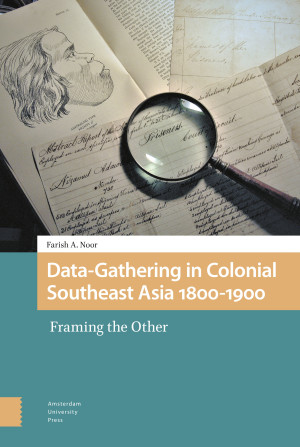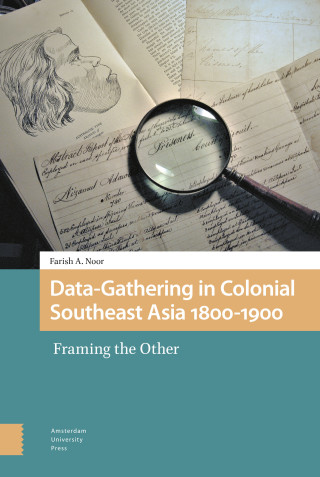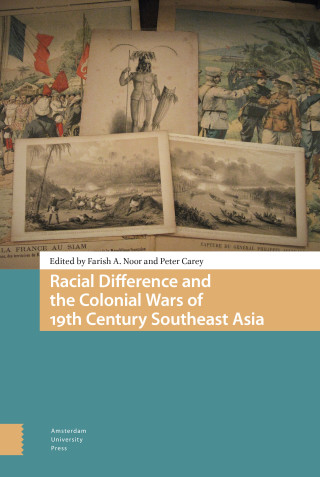Dedication
A note on spelling
Introduction. The Panopticon in the Indies: Data-Gathering and the Power of Knowing
I. Lost no longer: The House of Glass that is Postcolonial Southeast Asia.
Chapter 1: Caught in the Eye of Empire: Stamford Raffles' 1814 Java Regulations
I. An English government does not need the articles of a capitulation to impose those duties which are prompted by a sense of justice: Lord Minto's brand of benevolent imperialism in Java.
II. The Lieutenant-Governor is Watching You: Raffles' 1814 Regulations.
III. Knowing Java and Policing Java.
IV. Policing Bodies: Corpses, Prisoners and other 'Asiatic Foreigners'.
V. Policing and Profit: Raffles' Regulations of 1814 as the Foundation of Regulated and Racialized Colonial-Capitalism.
VI. Framing the Javanese as both Useless and Useful: Native Labour in Imperial Policing.
Chapter 2: Deadly Testimonies: John Crawfurd's Embassy to the Court of Ava and the Framing of the Burman
I. Stabbing at the Heart of their Dominions: John Crawfurd's Journal of an Embassy from the Governor-General of India to the Court of Ava as a Blueprint for Invasion.
II. I shall have the honour soon to lay an abstract before the Government: Crawfurd's Embassy to Ava read as an Intelligence Report.
III. Who Can I Trust? John Crawfurd's Search for Reliable Data from Reliable Witnesses.
IV. Racial Difference and the Framing of the Burmese in the Writing of John Crawfurd.
V. Deadly Testimonies: Weaponised Knowledge in the Working of Racialized Colonial-Capitalism.
Chapter 3: Fairy Tales and Nightmares: Identifying the 'Good' Asians and the 'Bad' Asians in the Writings of Low and St. John
I. Fairy Tale Beginnings: Hugh Low Spins the Tale of Sarawak's 'Redemption'
II. Knowing the Difference: Differentiating Between the 'Good' Asians and the 'Bad' Asians in the works of Hugh Low and Spenser St. John
III. Protecting the Natives from other Asiatics: St. John's negative portrayal of Malays and Chinese as the oppressors of the Borneans.
IV. Bloodsuckers and Insurgents: Knowing the Asian Other and the Maintenance of Colonial Rule.
V. And the Narrative Continues: The Fairy Tale Ending to Sarawak's Story.
Chapter 4: The Needle of Empire: The Mapping of the Malay in the works of Daly and Clifford
I. Elbow Room for Empire: Britain's Expansion into the Malay Kingdoms.
II. Stabbing at the Heart of the Malay: Seeking Justification for Britain's Expansion into the Malay States.
III. Enter the Imperial Needle: Dominick D. Daly, Geographic Intelligence, and Colonial Mapping.
IV. To Bring Darkness to Light: Hugh Clifford, Colonial Geography, and the Duty of 'the Great British Race'.
V. The Geography of Empire: Mapping and Colonial Power.
Chapter 5: Panopticon in the Indies: Data-collecting and the Building of the Colonial State in Southeast Asia
I. We want to know you better: Data-collecting in the service of Empire
II. Text and Context: Empire's Power Differentials and the Framing of the Colonized Other
III. Imperial Hubris: When Empire's Archive Fell Apart.
IV. The Panopticon Today: Data-Gathering and Governance in Present-day Postcolonial Southeast Asia.
Appendix A: Proclamation of Lord Minto, Governor-General of British India, at Molenvliet, Java, 11 September 1811.
Appendix B: Proclamation of Stamford Raffles, Lieutenant-General of Java, at Batavia, Java, 15 October 1813.
Appendix C: The Treaty of Peace Concluded at Yandabo.
Appendix D: The Treaty of Friendship and Commerce between Her Majesty and the Sultan of Borneo (Brunei). Signed, in the English and Malay Languages, 27 May 1847.
Appendix E: The Racial Census employed in British Malaya from 1871 to 1931.
Timeline of events and developments in Southeast Asia 1800-1900.
Bibliography.
Index




